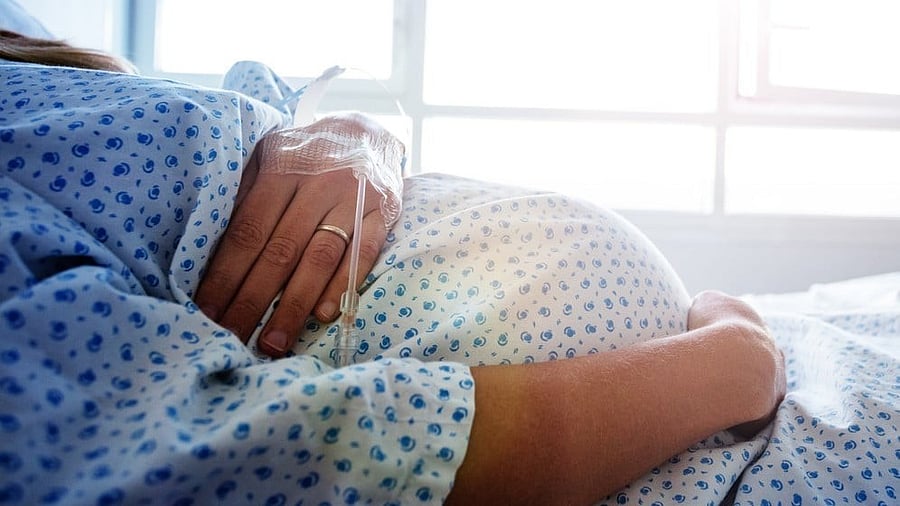
Representative image showing pregnant woman.
Credit: iStock Photo
New Delhi: Caesarean delivery rates in southern states are double than the national average and way above the eastern and Hindi heartland states, says a new study that identifies fear of natural deliveries and women’s wish to deliver a baby on a specific date as reasons for a surge in C-section among the well-off in private facilities.
Carried out by an international team with researchers from the USA, Sweden, Norway and India, the study finds that caesarean delivery rates are twice among the rich compared to the poor.
Among the southern states, Telangana tops the list with 60.7 per cent caesarean delivery followed by Tamil Nadu (44.9 per cent), Andhra Pradesh (42.4 per cent), Kerala (38.9 per cent) and Karnataka (31.5 per cent).
The eastern states, on the other hand, fare poorly with the lowest rate being recorded in Nagaland (5.2 per cent) followed by Meghalaya (8.2 per cent) and Bihar (9.7 per cent). Barring West Bengal and Sikkim, C-section was not a popular choice for birth for states in the north east, east and central India.
While the national average stands at 21.5 per cent, two other states with high caesarean rates are Jammu and Kashmir (41.7 pre cent) and Punjab (38.5 per cent).
Besides the geographical variation, the study also shows how economic status and the type of medical facility – public or private hospital – influence people’s choice. Only 5.6 per cent of facilities in the private sector across India had caesarean delivery rates below 10 per cent.
Analysing the data, collected as a part of the National Family Health Survey-5, the researchers found variations in C-section use within states as people from poor socio-economic backgrounds didn’t get the benefits due to lack of awareness, access and resources, despite medical needs.
“India is projected to have the highest number of caesarean deliveries worldwide by 2030, with persisting disparities favouring populations of high socio-economic status,” the team reported in the Lancet Regional Health.
While Madhya Pradesh and Gujarat introduced schemes to improve people’s access to caesarean deliveries, the study says, “There is evidence to suggest that the Gujarat programme may not be meeting its intended goal of increasing caesarean delivery rates in the target populations,” whereas in Madhya Pradesh it may lead to the procedure’s overuse but will not reach the target population.
In nearly 75 per cent states, the C-section rate among the poorest section of the society is less than 10 per cent, but at the same time in 69 per cent states, the delivery rates among the rich are twice that of the poor.
Among the well-off families, cultural and social factors such as fear of normal childbirth, the desire to deliver on an auspicious day, and a preference for painless deliveries and smaller families, also potentially contribute to higher caesarean delivery rates.
“The average overall out-of-pocket expenditure for caesarean deliveries is eight times higher than for normal vaginal deliveries, posing a significant risk of impoverishment, especially for lower-income groups,” the study notes.
“Disparities in maternal healthcare access are intricately tied to economic status, gender, and caste, and overlooking these structural determinants perpetuates inequities in policy design and implementation," the study says.
